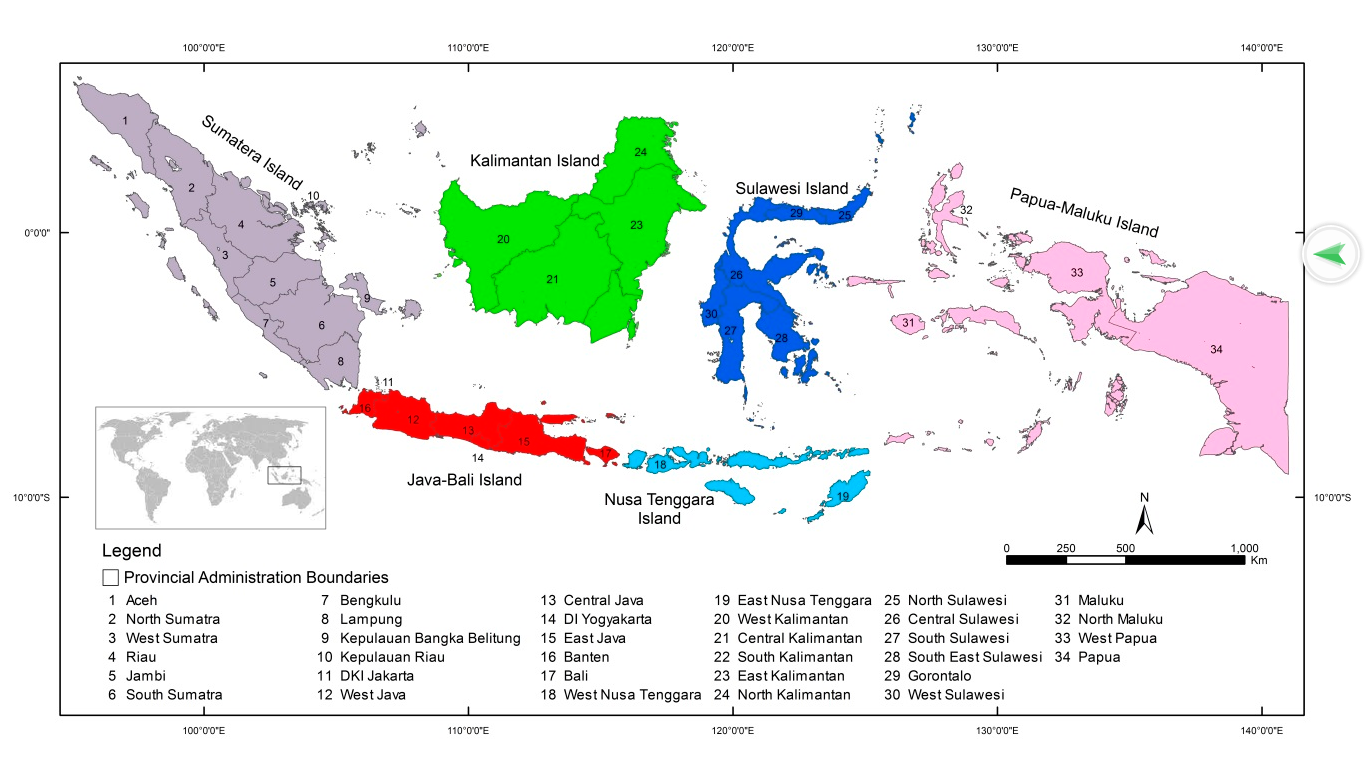Spatial Analysis of Socio-Economic Driving Factors of Food Expenditure Variation between Provinces in Indonesia

Abstract: Food security has become one of the global challenges; therefore, monitoring food consumption is required. As food consumption is a resultant of food availability at an affordable price, food expenditure actually is a key indicator to assess food security policy. Particularly, the link of food expenditure with socio-economic factors based on the perspective of spatial connectivity should be understood as nowadays food supply and demand between regions are increasingly connected. This study aims to define socio-economic driving factors of food expenditure that considering spatial connectivity between provinces in Indonesia. Data of household food expenditure and socio-economic factors by province including urbanization level, economic growth, gross domestic regional product (GDRP) per capita, poverty severity index, and unemployment rate were used. The preliminary test on the spatial correlation of food expenditure showed a significant result; thus, a spatial regression approach was employed. The results showed that declining food expenditure did not simply indicate increasing prosperity. Larger income disparity among the poor has become crucial to detect lower food expenditure caused by a lack of income. In addition, the increasing unemployment rate was followed by increasing food expenditure. Despite economic growth, increasing GDRP per capita and urbanization contributing to declining food expenditure, both poverty and unemployment are the main issues that threaten household’s ability to afford food. Furthermore, the effect of food expenditure in the neighboring region is also significant, but it shows a contradictory relationship as food expenditure in a region is decreasing when food expenditure in its neighbors is increasing, and vice versa. Therefore, reducing disparities in economic growth, GDRP per capita, urbanization, poverty, and unemployment rate between provinces is also crucial to support more equal food expenditure as well as to achieve the second goal of SDG’s (Sustainable Development Goals) in improving food security.
Keywords: food consumption; food expenditure; food security; socio-economic factors; spatial autocorrelation; spatial regression

 English
English